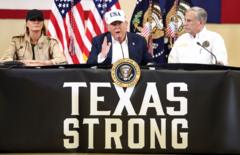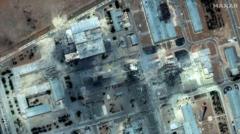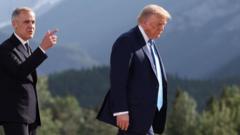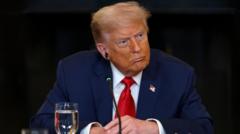New tariffs announced by Trump aim to reshape trade dynamics with Japan and South Korea, causing market reactions and uncertainties.
Titling Tariffs: Trump's Policy Shifts Target Asia

Titling Tariffs: Trump's Policy Shifts Target Asia
Amid rising tensions, President Trump imposes significant tariffs on key Asian allies.
As of August 1, 2025, President Trump has mandated a 25% tariff on exports from South Korea and Japan, a move that has sent shockwaves through global markets. This announcement follows a temporary extension allowing a pause on impending tariff increases against numerous countries, which was initially set to kick in shortly. Investors reacted negatively, fearing the ramifications of such high tariffs on two of the United States' primary trading partners.
In addition to tariffs on Japan and South Korea, Trump has outlined new rates for several other nations: Myanmar and Laos will endure a hefty 40% increase, while South Africa faces a 30% rise, accompanied by a similar 25% tariff for Kazakhstan and Malaysia. Further details can be gleaned from Trump's letters posted on social media, which outline these targets.
While the Trump administration has engaged in trade discussions with over a dozen countries for the past three months, only preliminary agreements have been reached with the UK and Vietnam. Progress with Japan and South Korea has lagged, attributed to recent electoral events in those countries and ongoing tariff threats targeting major exports such as automobiles and electronics. These nations remain cautious about formal agreements, hesitant due to the potential for future tariff impositions.
For additional insights, readers can access Trump's communication with South Korean President Lee Jae-myung, providing further context surrounding these trade challenges.
In addition to tariffs on Japan and South Korea, Trump has outlined new rates for several other nations: Myanmar and Laos will endure a hefty 40% increase, while South Africa faces a 30% rise, accompanied by a similar 25% tariff for Kazakhstan and Malaysia. Further details can be gleaned from Trump's letters posted on social media, which outline these targets.
While the Trump administration has engaged in trade discussions with over a dozen countries for the past three months, only preliminary agreements have been reached with the UK and Vietnam. Progress with Japan and South Korea has lagged, attributed to recent electoral events in those countries and ongoing tariff threats targeting major exports such as automobiles and electronics. These nations remain cautious about formal agreements, hesitant due to the potential for future tariff impositions.
For additional insights, readers can access Trump's communication with South Korean President Lee Jae-myung, providing further context surrounding these trade challenges.





















